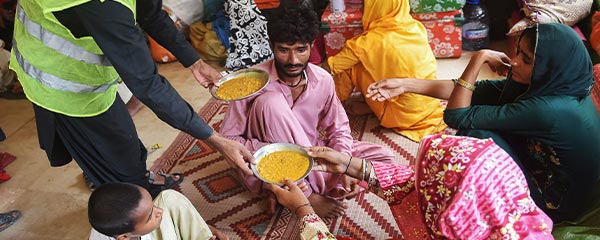LONDON -- While local governments collect most of the world’s garbage, a lot of it is still going up in dangerous smoke. New data from the highlight, for the first time, the scale of the problem of open burning, which poses risks to people’s health and the environment.
One in seven adults globally (14%) live in households that burn their waste, making open burning the third most common form of domestic waste disposal behind government collection and a household member taking it directly to a landfill.
The open burning of household waste is an informal activity that often leaves few physical records of its existence, making it difficult to measure and track. The World Risk Poll sought to quantify the extent of the problem through self-reporting because it has been so hard to measure. Despite the previous data gaps on open burning, it is known to cause significant harm to both public and environmental health.
Burning household waste releases black carbon into the atmosphere alongside unintentional persistent organic pollutants, known as “forever chemicals.” These chemicals enter food chains, are linked to several types of disease and are regulated by the Stockholm Convention. Open burning is a risk to public safety in other ways, including accidental fires and soil and water contamination, leading to agricultural and environmental losses. Many countries explicitly ban the practice.
Open Burning Widespread Across Africa, Parts of Asia
Despite the serious harmful effects of open burning and the legislation in place to prohibit it, it is still common in some parts of the world. More than one in three people in low-income countries (37%) live in households that burn their waste, compared with just 1% in high-income countries.
There are 22 countries where open burning is the dominant form of household waste disposal, relative to other methods -- most are in sub-Saharan Africa and South and Southeast Asia.
Indonesia stands out as a stark example. Indonesia is the fourth most populous country in the world and the world’s second-biggest producer of plastic waste. Just under half of Indonesians (48%) say their household burns waste -- one of the highest rates in the world, even though Indonesian law prohibits the activity.
Open Burning Most Common in Absence of Controlled Collection
Data from the World Risk Poll also highlight a key link between organized waste collection and household burning. The more the former is in place, the less the latter occurs.
This strong relationship, while not implying causality, hints at the important role governments (both local and national) play in minimizing the likelihood of open burning. People often burn waste to reduce the volume of material they discard.
Bottom Line
The scale of open burning has previously been uncertain because of a lack of globally comparable data. The World Risk Poll shines a light on the extent of the practice, showing how far the world has to go to achieve more sustainable waste management.
Open burning of household waste is a significant problem worldwide, causing major harm to public and environmental health. It disproportionately affects those in lower-income countries who are underserved by organized collection efforts and are most vulnerable to the damage that burning produces.
Read more about from Lloyd’s Register Foundation.
To stay up to date with the latest 优蜜传媒News insights and updates, follow us on X .
For complete methodology and specific survey dates, please review .
Learn more about how the works.




